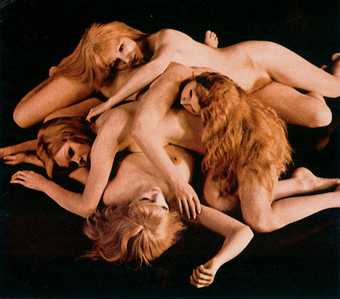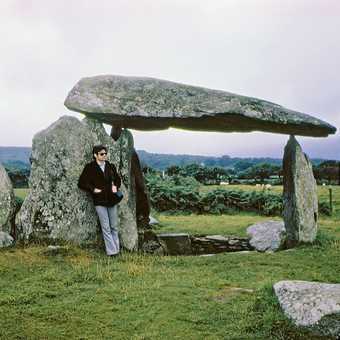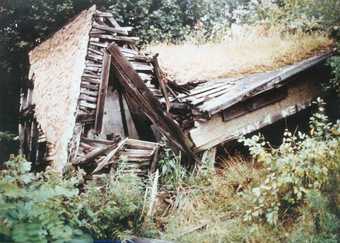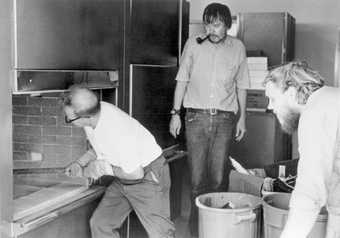Uncertainty and instability characterise contemporary times. In spite of this, success and progress seem to endure as a condition to strive for, even though there is little faith in either. All individuals know failure better than we might care to admit – failed romance, failed careers, failed politics, failed society, failed humanity, failed failures. What happens, though, when artists use failure to propose a resistant view of the world, when failure is released from being a judgmental term, and success deemed overrated?
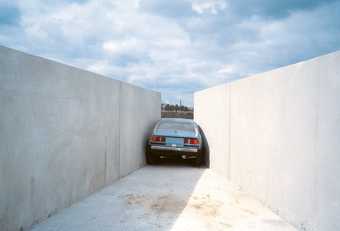
Roman Signer
Engpass at Aussendienst 2000
Installation, Hamburg
Dimensions variable
Courtesy the artist and Hauser and Wirth, Zurich © Roman Signer
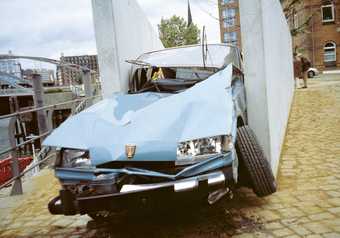
Roman Signer
Engpass at Aussendienst 2000
Installation, Hamburg
Dimensions variable
Courtesy the artist and Hauser and Wirth, Zurich © Roman Signer
Such imperatives have long threaded their way through the investigations of artists – indeed, art-making can be seen as an activity where doubt lies in wait at every turn and where failure is not always unacceptable conduct. There is the early nineteenth-century history painter Benjamin Robert Haydon, for instance, whose refusal to comprise – be it with his own partial-sightedness or his ambition (he would not paint fashionable portraits) – left him deemed a failed painter. In spite of this, his self-willed notoriety has placed him firmly within history. Or there is Alberto Giacometti, who in 1959 bemoaned his ability to produce only a ‘pale’ image of what he could see through his own eyes, leaving him believing that his own success would ‘always be less than my failure or perhaps equal to the failure’. Of course failure comes into play elsewhere too: scientists, inventors and entrepreneurs experiment and court risk in order to progress or, in cringe-inducing 1990s speak, ‘push the envelope’. Artistic practice and its surrounding discourses, though, operate somewhat differently: speculation here is not necessarily intent on reaching a goal, questions are no less powerful than answers and the production of ideas has no end point.
To talk of failure more recently, however, is not only to draw on melancholic radical doubt, but to embrace possibility in the gap between intention and realisation. There is a pleasure in failure, and its potential, too. Roman Signer, for example, courts failure just in case success unexpectedly turns up – if not, though, it really doesn’t matter. His “accident sculptures” use experiments to test things out, with the proceedings documented as evidence. In 56 Small Helicopters 2008 he sets off a swarm of insect-like model helicopters in a room far too small for their movement to be unimpeded. One by one they collide, and fail in a joyful choreography of not working. Or in Bottleneck 2000 a car was driven between two wedge-shaped concrete walls, the architecture arresting movement and the moment of failure marking the point where the event becomes sculpture. Think also of Fischli and Weiss’s film The Way Things Go 1987, or their photographic series Equilibres/ Quiet Afternoon 1984. In the photographs, objects hover in configurations just at the moment of collapse. In the film, systems of objects tumble over like dominoes, trained objects using wheels, fire and ramps to perform their roles. Fischli notes: ‘For us, while we were making the piece, it was funnier when it failed, when it didn’t work. When it worked, that was more about satisfaction.’
Perfection is satisfying, but failure is engaging, venturing into the unknown. After all, if an artist were to make the perfect work, there would be no need to make another. To cite Samuel Beckett: ‘Ever tried. Ever failed. No matter. Try again. Fail again. Fail better.’ Dominique Gonzalez-Foerster’s De Novo 2009, a single-screen black-and-white film made for the Venice Biennale, shows Gonzalez-Foerster struggling with the significance of being invited to participate in the grandest and longest-running periodic exhibition for a fifth time. De Novo roughly translates into English as ‘over again’ or ‘again, anew’. The film ruminates on the ways in which any possible proposal is informed by the history and failures of all those that might have gone before. It grapples with the unavoidable problems of the spaces between intention and realisation, with the artist describing her past ideas as “black holes” that always seemed unsatisfactory when realised. John Baldessari states: ‘Art comes out of failure. You have to try things out. You can’t sit around, terrified of being incorrect, saying “I won’t do anything until I do a masterpiece”.’
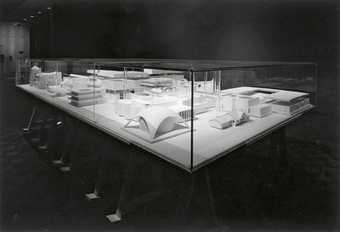
Mike Kelley
Educational Complex 1995
Synthetic polymer, latex, foam core, fibreglass and wood
129.5 x 487.7 x 243.8 cm
Courtesy Mike Kelley Studio © Mike Kelley
In 1831 Honoré de Balzac penned a short story titled The Unknown Masterpiece narrating a failure of belief, reputation and – that very crux of artistic practice – the artist’s realisation of his intention. The allegorical tale, set in seventeenth-century Paris, caught the imagination of Picasso, Henry James and Cézanne. Picasso, in fact, illustrated a centenary edition of the story, and moved to rue des Grands Augustins, where the ‘unfinished masterpiece’ was believed to have been produced. It was here, in his studio, that he unveiled Guernica 1937. Balzac describes his protagonist, an ageing artist named Frenhofer, working tirelessly on a painting, hidden from all until complete and perfect. Two painters – one, named François Porbus, just establishing himself and another, Nicholas Poussin, impatiently awaiting his first moment of validation – seek out the master and persuade him to let them be the first to see the elusive canvas. Its ostensible subject is the artist’s past mistress. He had been meticulously correcting his work for many years so that it would be indistinguishable from a living body, but before revealing it, Frenhofer desperately needed to check the painting against the ‘real thing’. It had taken so long that the former lover would have significantly changed from his, probably in any case inaccurate, memory. Poussin, somewhat disastrously, elects his mistress for the purpose. Finally, with the younger painters anticipating the pinnacle of artistic labour, the masterpiece is revealed. What is seen is not at all what was expected. The pursuit of perfection has undone the representation: a ‘wall of paint’, with a single perfect foot just visible among the mass of colour, shines from the canvas. Frenhofer tries to justify the work as an atmosphere rather than a depiction, but ultimately, in this era of representational painting, he believes it to be a failure, and evidence of his own lost mastery.
Balzac’s account is of the gaps between intention, expectation and realisation. Frenhofer is working from a memory, chasing the past in pursuit of perfection. Is perfection, after all, the most accurate route to the past, or, indeed, to perfection itself? Is there a method more pertinent to the ways in which we understand our place in the world, and to the ways in which art can complicate what we believe we know? Think of Felix Gonzalez-Torres’s Perfect Lovers 1991 – a pair of cheap battery-operated clocks that inevitably will fail to keep the same time.
The ‘perfection’ lies in the failure of accuracy; anything else would be romantic fiction. Like these out-of-sync clocks, human beings are all fallible; perhaps this is most explicitly revealed to us in how we understand the past – that is, through memory and imagination. Here failure abounds. The thinker Paul Ricoeur considered in detail the processes of memory and recollection, noting that perfect memory, like Gonzalez-Torres’s clocks, is replete with both failure and perfection. He describes memory as always being at the mercy of the powerful forces of distraction and influence from other experiences held in the mind. ‘Pure’ memory is simply to recall; memory influenced by imagination an engagement. As with Gonzalez-Torres’s clocks, photographic, or indexical, recollection will never be the most truthful. Frenhofer’s recollections are not fulfilled in his painting in terms of representation, but it could well be that his abstraction really did capture the essence of his subject. Failure is always relative, always comes with a context and specific time frame. At another moment this might, indeed, have been a masterpiece.
Failure is endemic in the creative act, leaving the question not if something is a failure, rather how that failure is harnessed. Some failures are structural: in architecture this would be the moment when a supporting part of a building meets its limits. Robert Smithson’s Partially Buried Woodshed 1970 is one such structural failure – in both literal and abstract terms. In 1970, at the height of the anti-Vietnam War movement, Smithson was invited to make a work for Kent State University in Ohio. An abandoned woodshed at the edge of the campus was piled over with twenty cartloads of earth, stopping at the exact point when the central beam broke. In May the same year, four students demonstrating on campus in a rally against the invasion of Cambodia were shot by the National Guard. Shortly afterwards ‘May 4, 1970’ was painted on the wall of Partially Buried Woodshed, immediately bringing another meaning to the entropic monument – one of a second structural failure. Some years later, Renée Green’s Partially Buried in Three Parts 1996–7 directly readdressed Smithson’s work with remembered history. Her multi-part installation worked with interviews with local residents, activists, her family members and artists about their imagined and actual memories of America in the 1970s and of the Kent State incident. The charge in Green’s work is in the power of the failure to remember and in the failures for the facts of events to be written into history, all the while re-engaging Smithson’s work through the present. As with Gonzalez-Foerster’s recollections, the references build to draw attention to the moments of forgetting and to the ways in which recollection is a process clouded by mistake, misrepresentation and the failure of verisimilitude.
Failure can open a wormhole through which one can travel to the past. If a recollection is represented as a perfect point-by-point double of the past, it is time travel without knowledge of the present. A memory of the past that has been tainted by the imagination is a process predicated on engagement: the past becomes filtered through the knowledge of the present. Mike Kelley addresses the failure of forgetting as incidents of trauma. His Educational Complex 1995, for example, is a work consisting of architectural models of every educational establishment that Kelley can remember attending, alongside a model of the house he grew up in. The blanks of the locations he cannot recollect are left, to recall Gonzalez-Foerster, as black holes intensifying what can be remembered. There is an analogy here to the ways in which we gain knowledge: when starting to study at school, one learns by rote and repetition. By the time higher education comes around, repeating facts is not enough: what counts is synthesis and extending ideas. Like the building up of knowledge, engagement with artworks is not a static process, rather it is a productive and continuous process of re-readings and misreadings across the narrative of history that are, in their failures, productive. As with Smithson’s aforementioned piece, artworks are constantly retroactively recharged.

Carol Bove
Conversations with Luis Borges 2002
Mixed media
Courtesy HOTEL, London © Carol Bove
Bringing the past into the present is to mine failure, potentially inducing nostalgia. Failure all too easily can become a wistful memory of what might have been – see for example Eugène Ionesco’s play The Chairs (1952), where a couple, now in their later years, are depicted constantly talking about their failed plans. This absurdist play is a warning to the nostalgic comfort that failure can bring. Bringing the past into the present through the power of nostalgia, however, can be productive. Carol Bove’s accumulation of references and objects, for example, presents lifestyle commodities that embody past promises for the future in order to consider productively the ways that our present desires will potentially fail in the future. Using references that range from Playboy to Marshall McLuhan, Twiggy and Jane Fonda, via design classics and the sculpture garden of New York’s MoMA, her compositions turn these symbols of utopian desire into props for outmoded ideological positions. Transported to the present, they act as reminders that if, somehow, things had played out as planned in the past, a very different future might have been delivered. Bove’s assemblages, though, are not melancholic, rather they propose possibilities. As Gertrude Stein noted: ‘A real failure does not need an excuse. It is an end in itself.’ Between the two subjective poles of success and failure lies a space of potential where paradox rules and where transgressive activities can refuse dogma and surety. It is here we can celebrate failure.

